| Photo of the Month – April 2023 |
[German version] |
Friction … and the rest.
Friction really is one of those things… There are guidelines in standards that are helpful in making an initial assessment and then there’s the reality – and that’s what we want to look at today.
First of all, though, let us say a few words about all the contributing factors that may have to be taken into account in order to consider the entire physical phenomenon. As some of the standards usefully mention, this phenomenon acts as a coherent whole and not piecemeal.
First of all, there is cohesion, that is to say the forces that hold materials of every type together. This applies up to the point when the surfaces start to change due to aging and wear or the adsorption of other substances. Then there is also adhesion. This is the force that holds two different substances together. Water can be named as one example here which is able to develop high adhesive forces.
For example, if a standard distinguishes between wet and dry surfaces then it will usually indicate that the wet surfaces have considerably poorer friction, as one might also naturally assume. However, the opposite is also often true: if you work with a shovel when your hands are dry then the shovel can easily slip out of your grasp. It can be helpful to wet your hands before doing manual work as this dramatically improves friction. For example, if you are working with a firm dough in the kitchen then it won’t slip away from you so easily if you put a damp cloth under it. A wet T-shirt is also much more difficult to take off than a dry one.
So what are we trying to say?
Naturally, the information printed in the standards is perfectly valid as a starting point. However, it is necessary to consider each situation individually in order to make sure that every eventuality is catered for, because there are many influencing factors that can have a negative effect on the forces between contact surfaces – as today’s Photo of the Month shows.
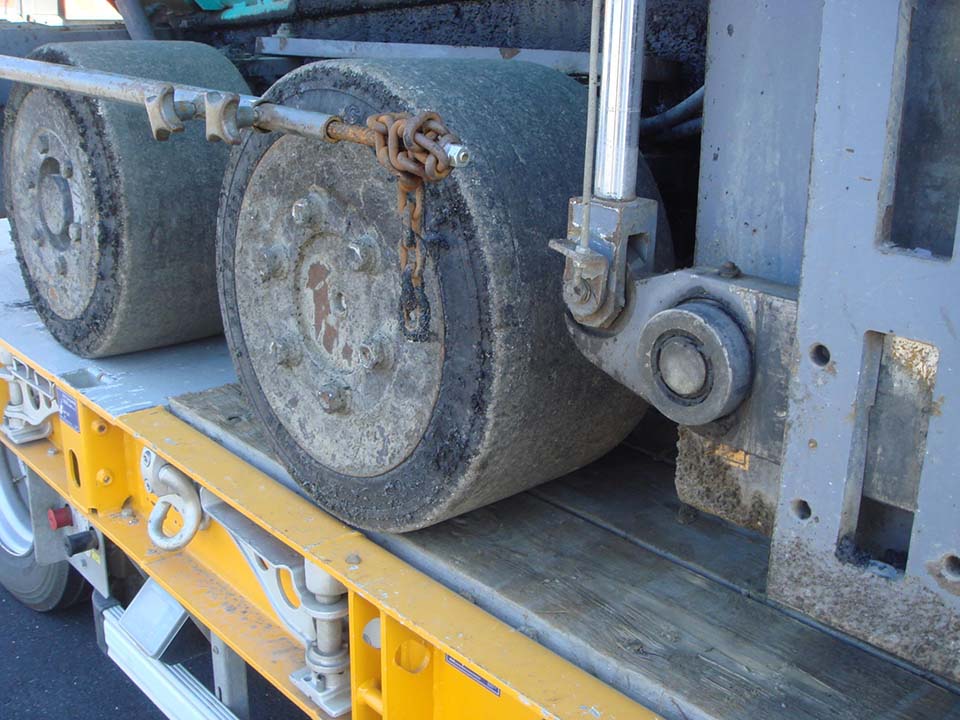
Figure 1 [Karl-Heinz Pachoinig]
First of all, we have to ask what materials are actually forming the contact surfaces? Is it a tire on wood or a tire on a painted steel surface, or maybe loose sand and dried-on asphalt on a special plastic coating? If we want to make sure that everything is safe, we should assume a very small value for the coefficient of friction, e.g. µ =0.2, or create clearly defined conditions by positively and unambiguously manipulating the friction by means of appropriate materials (anti-slip mats).
Although in other contexts, we are often very happy to argue the case for using anti-slip material, the issue is often far less clear-cut in the case of construction site vehicles because the levels of dirt and contamination are often considerable and can only be eliminated with great effort, if at all.
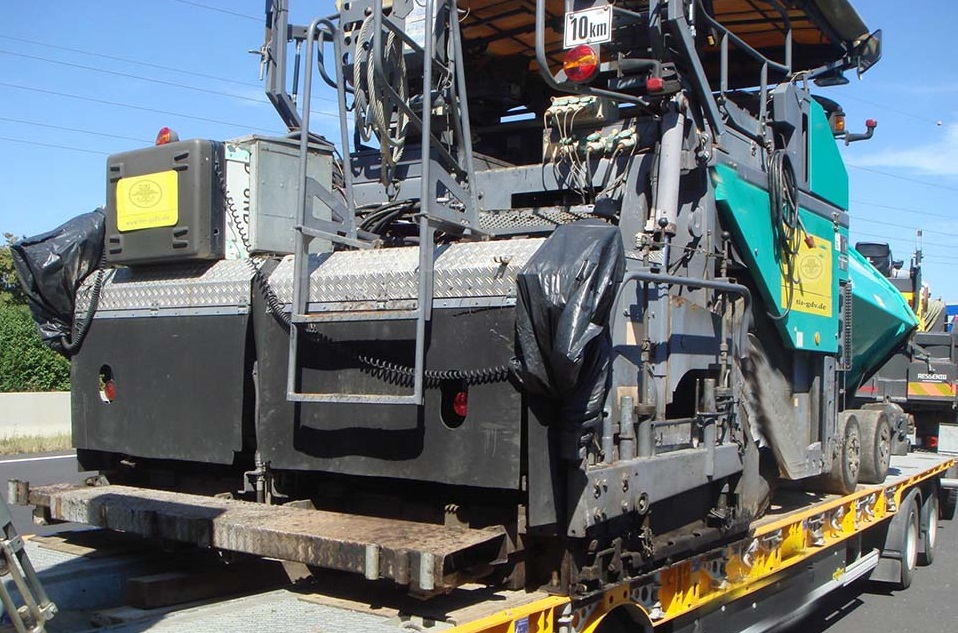
Figure 2 [Karl-Heinz Pachoinig]
Figure 2 shows the asphalt paver together with its entire contact surface. Dried-on asphalt or other road-making materials can have a positive effect on friction, but this is not always the case. This means once again that safety is only provided by that which can be safely assumed to work. Nothing could be easier than to equip this construction machine with its own “personal” load securing material. With a gross vehicle weight of 17.8 tonnes and an assumed coefficient of friction of μ = 0.2, it is necessary to apply a further securing force of 10.680 daN in the direction of travel as well as 5.340 daN to the sides and the rear. This can be done exceptionally effectively using direct lashings, in particular given that the lowloader trailer is equipped with good load securing points of various types. However, what appears to be missing is the attachment points at the machine itself. Or at least, they don’t immediately leap to the eye.
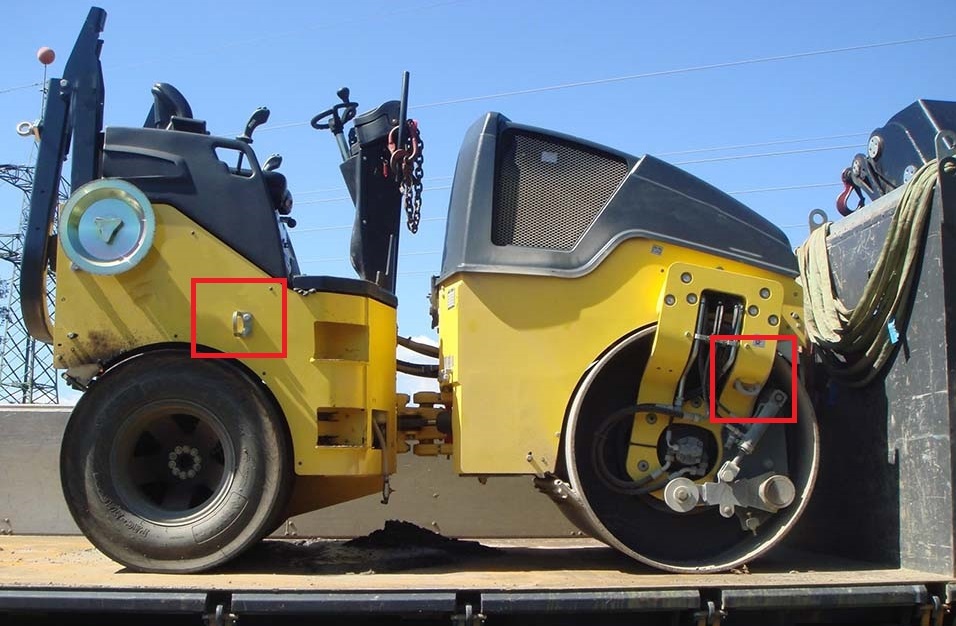
Figure 3 [Karl-Heinz Pachoinig]
This road roller is loaded on the towing vehicle. There is no tight fit to the front. The loading surface is made of steel and is extremely dirty. The resulting friction pairs are steel / steel and plastic / steel, in each case with an indeterminate amount of dirt in between.
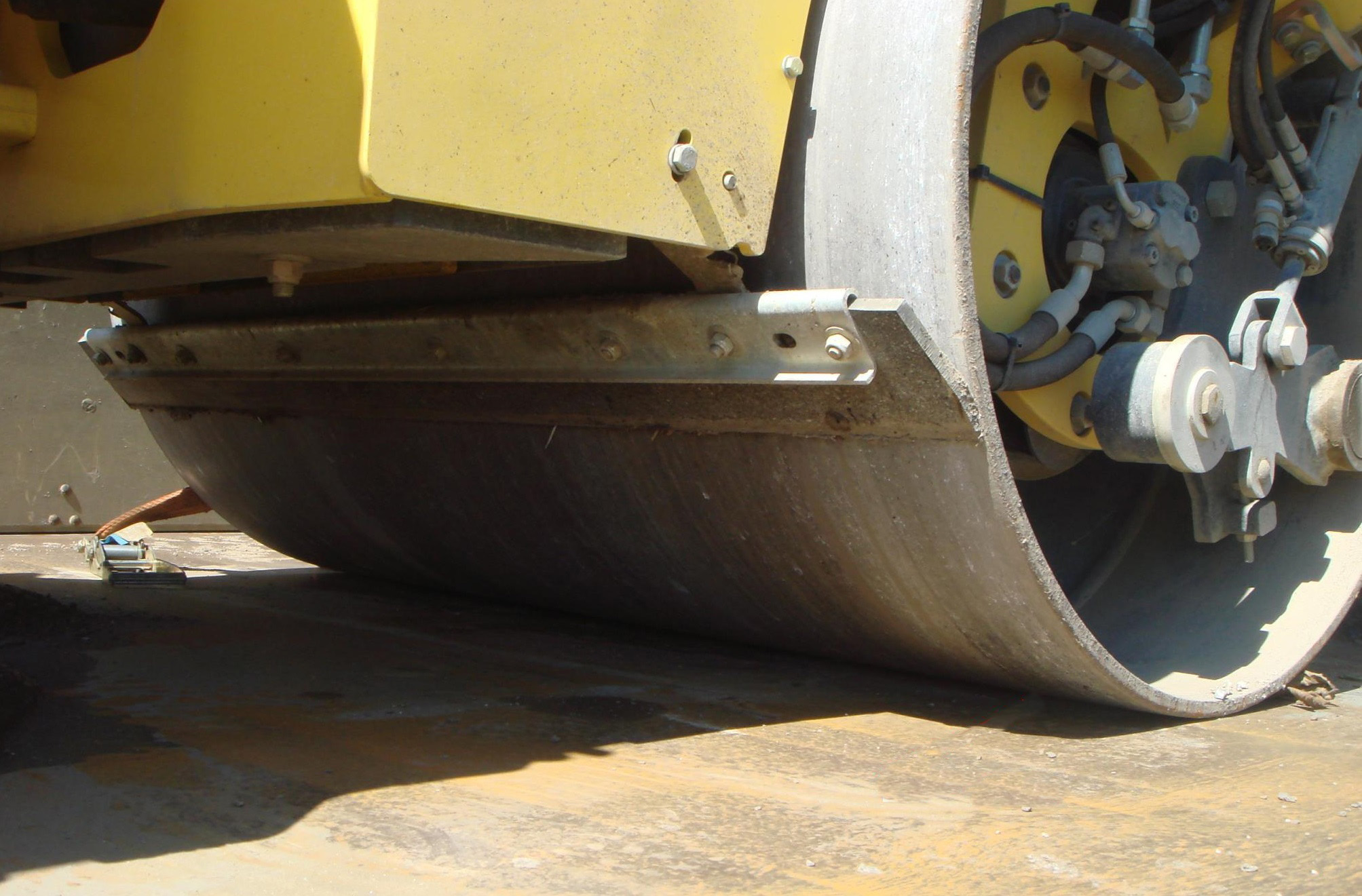
Figure 4 [Karl-Heinz Pachoinig]
No one is going to demand that the driver should make sure that all the contact surfaces are clean so that the friction takes full effect. It would be very helpful to use the right securing material here (chains, for example). Nevertheless, the road roller does appear to be equipped with securing points (see areas outlined in red in Figure 3). Given that the machine comes with its own lifting gear, then why not also some chains for load securing?
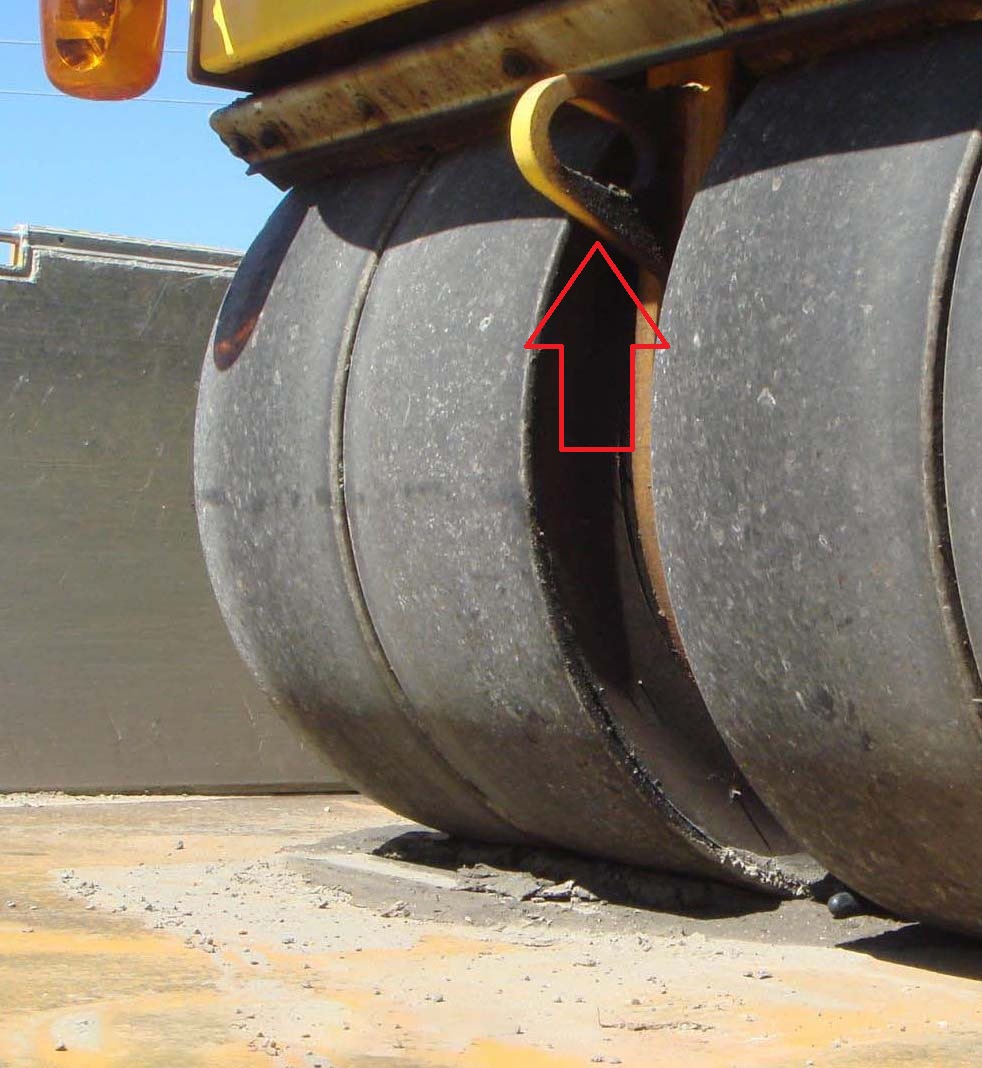
Figure 5 [Karl-Heinz Pachoinig]
In reality, it would be impossible to constantly keep construction vehicles so clean that a clearly defined friction acts at all times. This photo again shows (see arrow) that the road roller possesses plentiful load securing points.
Your load securing columnists wish you a safe and secure spring.
Back to beginning
